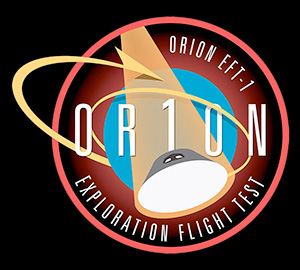 advertisements advertisements
|

|
NASA's 'picture perfect' Orion capsule test flight in photographs
Dec. 8, 2014 – NASA's first Orion space capsule completed its maiden voyage on Friday (Dec. 5), flying farther out from the Earth than any spacecraft designed for astronauts since the Apollo 17 mission 42 years ago this week.
"[This] flight test of Orion is a huge step for NASA and a really critical part of our work to pioneer deep space on our journey to Mars," NASA Administrator Charles Bolden said in a statement.
NASA's Orion Exploration Flight Test-1 began with the lift off of a United Launch Alliance Delta 4 Heavy rocket from Complex 37B at the Cape Canaveral Air Force Station in Florida and ended four hours and 24 minutes later with a splashdown in the Pacific Ocean. Along the way, the EFT-1 mission tested key part of the Orion spacecraft, including the jettison of its fairing and launch abort system, its ability to function while passing through the Earth's radiation belts and most critically, its heat shield's ability to withstand temperatures nearing those encountered during a return from deep space.
The "picture perfect" test flights clears the way for more ambitious Orion missions to circle the moon, visit a redirected asteroid and ultimately travel with astronauts to Mars and back. Presented here, a collection of photographs and imagery taken during Orion's EFT-1 journey. |
|

Photographs: collectSPACE.com / NASA / United Launch Alliance / U.S. Navy |

NASA's Orion spacecraft mounted atop a United Launch Alliance Delta 4 Heavy rocket was visible inside the Mobile Service Tower where the vehicle underwent launch preparations, Dec. 3, 2014 at Space Launch Complex 37. (Credit: collectSPACE) |

(Credit: NASA/Bill Ingalls) |

The Mobile Service Tower was rolled back on Dec. 4 to reveal NASA's Orion spacecraft mounted atop the United Launch Alliance Delta 4 Heavy rocket at Cape Canaveral Air Force Station's Space Launch Complex 37. (Credit: NASA/Kim Shiflett) |


(Credit: NASA/Bill Ingalls) |

(Credit: NASA/Kim Shiflett) |

The United Launch Alliance Delta 4 Heavy rocket with NASA's Orion spacecraft mounted atop it is seen during sunrise on Thursday, Dec. 4, 2014, at Cape Canaveral Air Force Station's Space Launch Complex 37, Florida. (Credit: NASA/Bill Ingalls) |

This helicopter view of Space Launch Complex 37 at Cape Canaveral Air Force Station in Florida shows the United Launch Alliance Delta 4 Heavy rocket as it stands ready to boost NASA's Orion spacecraft on Dec. 5, 2014. (Credit: NASA/Kim Shiflett) |

(Credit: United Launch Alliance) |

The Delta 4 Heavy rocket lifts off from Complex 37 at Cape Canaveral Air Force Station in Florida carrying NASA's Orion spacecraft on an uncrewed flight test to Earth orbit. Liftoff was at 7:05 a.m. EST (1205 GMT) on Dec. 5, 2014. (Credit: collectSPACE) |

(Credit: United Launch Alliance) |

(Credit: United Launch Alliance) |

(Credit: NASA/Bill Ingalls) |

This video still from a camera mounted on the Delta 4 Heavy rocket launching NASA's first Orion spacecraft shows the Earth rescinding below during the first four minutes of flight. (Credit: NASA TV) |

This video still from an onboard camera captures separation of the Orion service module fairings, one of the objectives of the Exploration Flight Test-1 (EFT-1) mission, six minutes and 15 seconds after launch. (Credit: NASA TV) |

A camera in the window of NASA's Orion spacecraft looks back at Earth during its unmanned flight test in orbit. (Credit: NASA TV) |

This video still from a camera on board NASA's Orion spacecraft captured views out the window of the heat of re-entry as the capsule fell back towards Earth in a key test of the Orion's heat shield, the largest ever built. (Credit: NASA TV) |

NASA's Orion capsule descends under its three main parachutes to a splashdown in the Pacific Ocean. (Credit: U.S. Navy/Charles White) |

NASA's Orion splashes down in the Pacific Ocean four hours and 24 minutes after launching. (Credit: U.S. Navy/Christopher Veloicaza) |

U.S. Navy divers assigned to Explosive Ordnance Disposal Mobile Unit 11 and Fleet Combat Camera Pacific together with crew members from the amphibious transport dock USS Anchorage approach NASA's Orion capsule after splashdown. (Credit: U.S. Navy/Charles White) |

Navy Divers, assigned to Explosive Ordnance Disposal Mobile Unit 11 and Mobile Dive and Salvage Company 11‐7, attach a towing bridle to NASA's Orion capsule. (Credit: U.S. Navy/Gary Keen) |

Rigid hull inflatable boats and combat rubber raiding crafts guide NASA's Orion capsule towards the welldeck of the U.S. Navy amphibious transport dock USS Anchorage. (Credit: U.S. Navy/Elena Pence) |

(Credit: U.S. Navy/Corey Green) |

(Credit: U.S. Navy/Gary Keen) |
|

© collectSPACE. All rights reserved.
|
|

|

|
